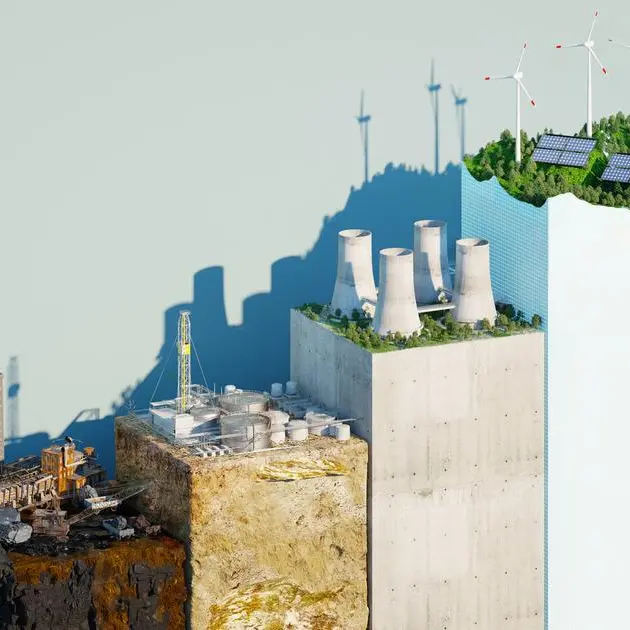PHOTO
Energy is today perhaps the most critical of all policy considerations as countries around the world struggle to meet their commitments under the 2015 Paris Agreement and the climate change prognosis grows ever scarier.
The United Nations’ seventh Sustainable Development Goal (SDG) is to ensure affordable, reliable, sustainable and modern energy for all, but achieving this would also contribute to achieving some of the other SDGs, such as alleviating poverty and hunger, while improving health and well-being, work and economic growth, sustainable cities and communities, responsible consumption and production, and, of course, climate action, and along with it life below water and on land.
The primary means of addressing the energy challenge is to promote renewable sources while phasing out carbon-based energy, and the past decade has seen remarkable progress in the renewables area. Solar and wind have become mainstream energy sources over that time, with many countries now generating more than 20 percent of their energy needs from these sources,[i] and growth in renewables is outstripping that of any other energy source.[ii] Much of this has been achieved through government support, but the vast majority of countries around the world are still behind target[iii] and governments are under growing pressure to do more.
This pressure is likely to continue until technological advancement in renewables pushes them beyond the ‘tipping point’ where they become more cost effective than carbon-based energy sources. This tipping point is within reach. Perhaps it is already here. Perhaps it is not so much a tipping point as a tipping phase, and that phase has already begun. For example, it was reported in August that China, which aims to source 20 percent of its energy needs from renewables by 2030, has reached the point where home-produced solar power is cheaper than electricity generated from the national grid.[iv] This is particularly salient given that China remains the world’s largest emitter of greenhouse gases.[v]
The International Renewable Energy Agency (IRENA) early last year predicted that all renewable energy technologies would be price competitive against fossil fuels by 2020.[vi] A report released by IRENA in May this year suggested the world is on track to achieve this. IRENA said onshore wind costs of 3-4 US cents per kWh are now possible in places with good natural resources and the right regulatory and institutional frameworks. It also noted that new solar projects in countries including the UAE, Saudi Arabia, Chile, Mexico and Peru have seen a levelized cost of electricity of as low as 3 US cents per kWh, helped by governments holding competitive bidding processes for new power plants.
Investments in new renewable power capacity outstripped the numbers invested in fossil fuel-based capacity in 2017,[vii] with most such installations occurring in developing and emerging countries, which produce more than half of the world’s greenhouse gas emissions.[viii] Indeed, helping developing countries to extend their renewable energy capacities is one policy developed nations can pursue on top of their own national targets.
But despite the actions being undertaken by governments in the developed world, and these have been many, global greenhouse gas emissions continue to push higher. Total carbon emissions from fossil fuels and industry rose 1.6 percent in 2017 and were forecast to move more than 2 percent higher in 2018, according to data from the Global Carbon Project.[ix]
This increases the political pressure to roll back carbon-based sources of energy through means such as carbon pricing, but there is only so much a government can do in this regard without risking a serious political backlash. France and Ecuador provide two recent examples of the sometimes violent street protests that can arise from raised fuel prices. There are also limits to how far the public is prepared to amend its own behaviour to contribute to fighting climate change. A recent poll in the Washington Post showed that although a large majority of Americans regard climate change as a major problem or crisis, fewer than 4 in 10 think that tackling the problem will require them to make ‘major sacrifices’ and most are unwilling to pay for it out of their own pockets.[x]
Therefore, while governments and citizens can and should do what they can to tackle climate change, there are limits to these approaches and the ultimate solution when it comes will be delivered through technological advance. Admittedly, this presents its own political difficulties, not just in terms of what may be large government expenditure on green research, industry and infrastructure, but also in that future technology is difficult to quantify. For example, the UK government’s commitment to stop sales of fossil-fuel powered cars by 2040 depends on technology that hasn’t yet been fully developed. Climate activists for this reason cite the ban as an example of what they see as government inaction.
But though unpredictable, there is little denying that technology keeps delivering. Solar power, for example, has begun to compete with traditional forms of energy in terms of price as a result of developments such as concentrated solar power, or CSP, which stores power that can be released even when the sun is not shining, such as at night. In October this year, Cambridge University in the UK announced a revolutionary ‘artificial leaf’ that uses only sunlight, carbon dioxide and water to produce a widely-used gas that is currently produced from fossil fuels and can eventually be used to develop a sustainable liquid fuel alternative to petrol.[xi] It could also be used in other commodities such as pharmaceuticals, plastics and fertilisers.
All in all it is a race against time for technology to make renewables so attractive it becomes the only business proposition, while government action in the meantime must tread the delicate balance between making carbon less financially viable than renewables while supporting as far as possible the technological advances that can provide a solution that will not just ameliorate climate change – a huge goal in itself – but will make energy cheaper and easier for all, thereby fulfilling the aims of many of the UN’s Sustainable Development Goals.
This topic was discussed at the World Green Economy Summit (WGES) on October 20-21 at Dubai International Convention and Exhibition Centre. To learn more about the World Green Economy Summit, please visit the following link http://www.wges.ae/
[i] https://www.ren21.net/wp-content/uploads/2019/05/gsr_2019_full_report_en.pdf
[ii] https://www.ren21.net/wp-content/uploads/2019/06/17-8622_Policy_FullReport_web_FINAL.pdf
[iii] https://climateactiontracker.org/countries/
[iv] https://www.inverse.com/article/58495-solar-energy-prices-hit-tipping-point-as-china-reaches-grid-parity
[v] https://www.economist.com/graphic-detail/2019/05/25/china-is-surprisingly-carbon-efficient-but-still-the-worlds-biggest-emitter
[vi] https://www.forbes.com/sites/dominicdudley/2018/01/13/renewable-energy-cost-effective-fossil-fuels-2020/#2e7a13e24ff2
[vii] https://www.ren21.net/wp-content/uploads/2019/06/17-8622_Policy_FullReport_web_FINAL.pdf
[viii] https://www.undp.org/content/dam/undp/library/planet/climate-change/NDC_Outlook_Report_2019.pdf
[ix] https://www.wri.org/blog/2018/12/new-global-co2-emissions-numbers-are-they-re-not-good
[x] https://www.washingtonpost.com/climate-environment/americans-increasingly-see-climate-change-as-a-crisis-poll-shows/2019/09/12/74234db0-cd2a-11e9-87fa-8501a456c003_story.html
[xi] https://www.sciencedaily.com/releases/2019/10/191021111826.htm
© Special Contributions 2019












